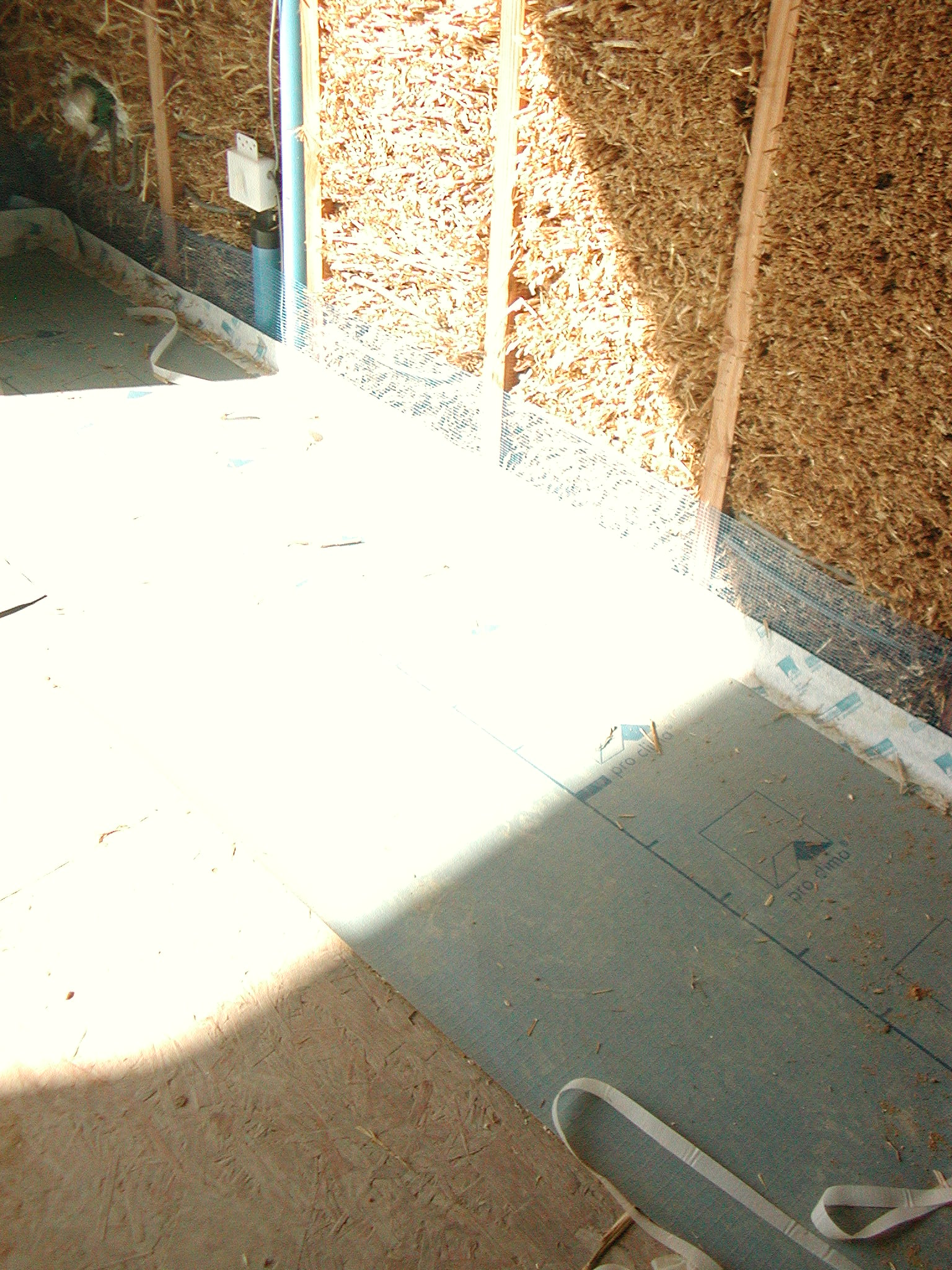All who have joined this discussion, do you have any pictures of such
details that you would be so kind to share with me?
I will be using them for an essay for my studies comparing them with
convential details. Please provide source for the photo, so i can
accredit it.
Thanx!
sara
On Mon, Mar 7, 2011 at 5:28 PM, RT <ArchiLogic@yahoo...> wrote:
On Mon, 07 Mar 2011 01:14:52 -0500, David Neeley <dbneeley@gmail...> wrote:
On a well detailed straw bale in which you have paid attention to air
sealing, don't you then run the opposite problem--having inadequate air
changes?
Would it not in such case be prudent to also install an energy recovery
ventilator?
On 03/06/2011 11:02 PM, RT wrote:
strawbale construction methodology is inherently conducive to yielding
air-tight buildings
I don't think that there is any question of the necessity of paying careful
attention to air-sealing
with any well-insulated building, whether it has straw in the walls or not.
Any air-leakage point is a point where bulk moisture from conditioned
interiors will find its way into the envelope materials and condense
somewhere within the cross section.
Once that moisture is in liquid form, it becomes more difficult (than if it
were in vapour phase) for that moisture to get out again even if the skin
materials are vapour permeable. (ie vapour permeable is not liquid
permeable).
So what you have is moisture hanging around for a long time and like
teenagers with too much time on their hands, trouble (in the case of
building materials, microbial activity) is sure to ensue.
If one is relying upon air leakage through the envelope materials to provide
the necessary ventilation air changes, then that ventilation air is going to
be passing through mould/mildew/crud infested materials before entering the
indoor air environment -- certainly not a scenario that is conducive to
creating healthful living space.
So if air-tight construction is a necessity with well-insulated buildings to
preserve the integrity of the materials and avoid potential deleterious
health consequences to the building's occupants, then it necessarily follows
that a ventilation strategy be implemented as well to ensure the necessary
air changes to provide good indoor air quality.
And since the minimum (ie the worst that the Codes will allow) ventilation
rate requires that the entire
volume of air inside the house (air which you have spent energy to
condition) be changed a minimum of ~8.4 times a day ... (ie you need to the
empty the house of air that has been heated/humidified to 18-21 degC /~20 -
25% RH and replace it with fresh outdoor air (which might be at minus 20 or
minus 40 degC and containing almost no moisture) that has to be warmed up to
18 - 21 degC at least eight and a half times every day ... and since any
energy recovery ventilator worth considering will recover 75 to 95 percent
of the energy from the stale air exhaust stream, I think that the choice is
a no-brainer (and a Code requirement here in Ontario).
--
=== * ===
Rob Tom
Kanata, Ontario, Canada
< A r c h i L o g i c at Y a h o o dot c a >
manually winnow the chaff from my edress if you hit "reply"
____________________________________________________
European strawbale building discussion list
Send all messages to:
Strawbale@amper....muni.cz
Archives, subscription options, etc:
http://amper.ped.muni.cz/mailman/listinfo/strawbale
____________________________________________________
____________________________________________________
European strawbale building discussion list
Send all messages to:
Strawbale@amper....muni.cz
Archives, subscription options, etc:
http://amper.ped.muni.cz/mailman/listinfo/strawbale
____________________________________________________
